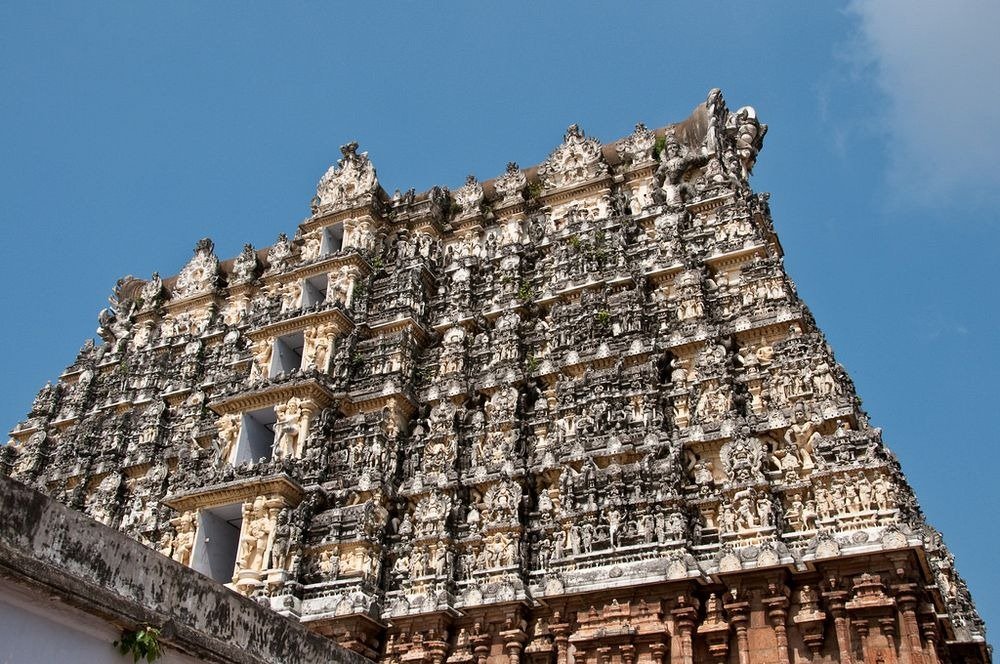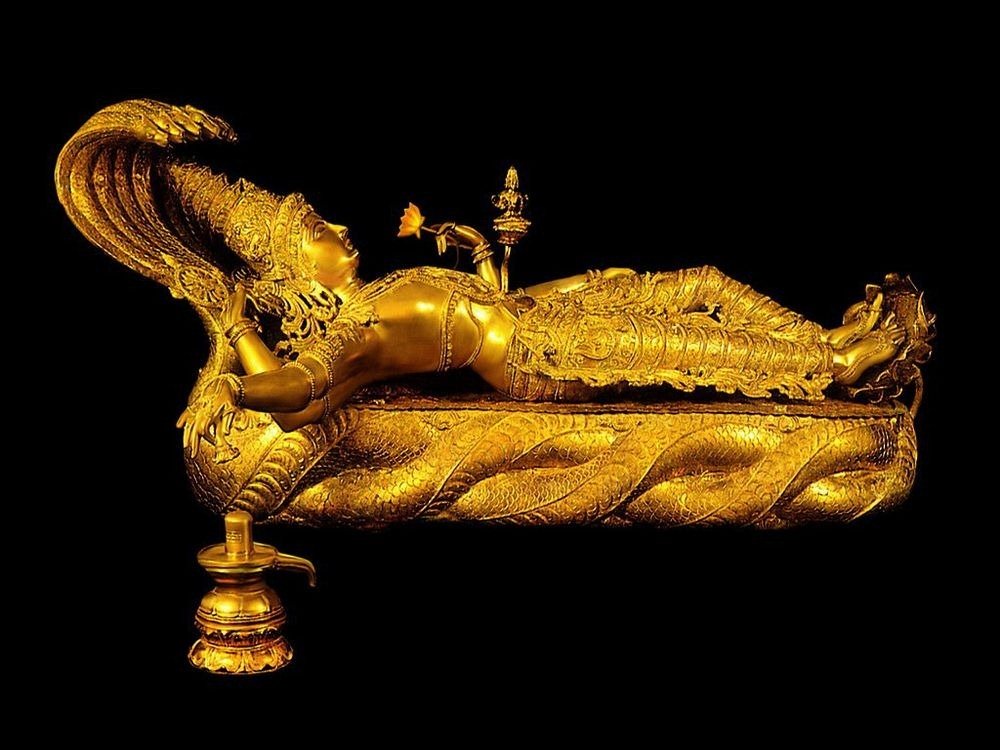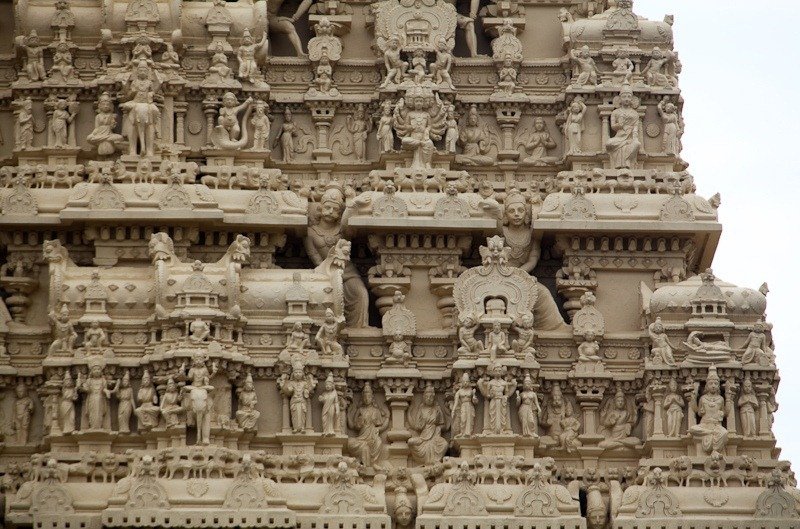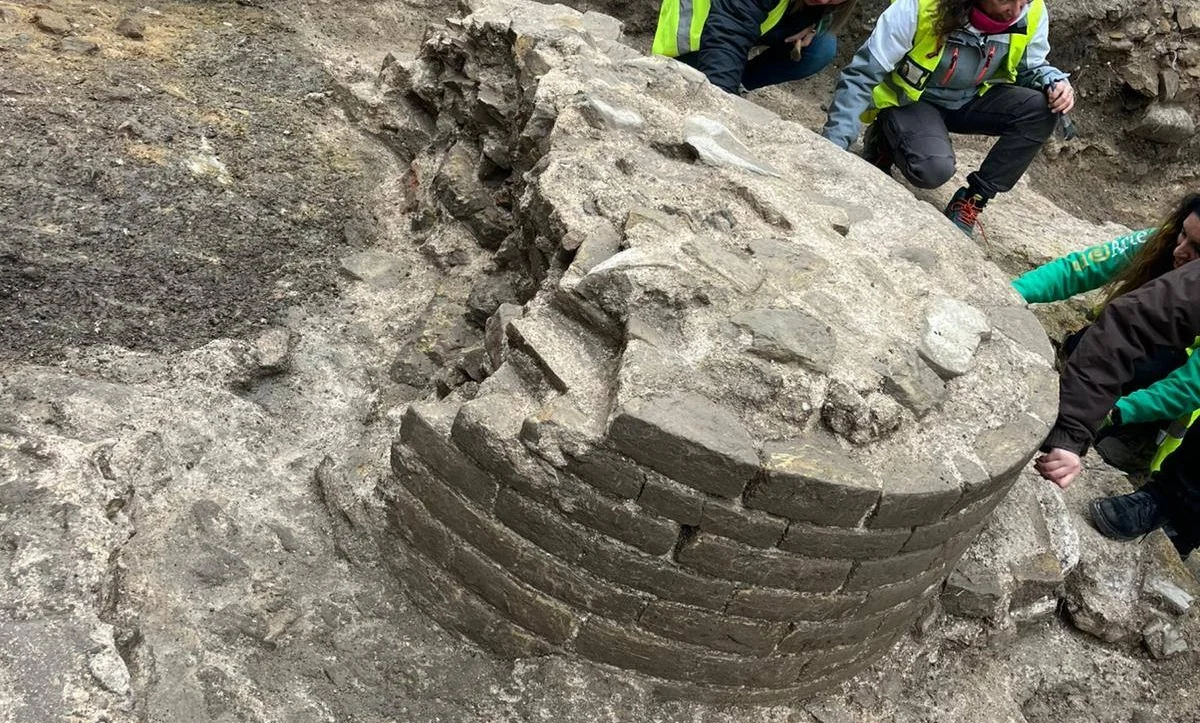India has long been intrigued by the renowned Padmanabhaswamy temple in Thiruvananthapuram, in the state of Kerala, which is devoted to Lord Vishnu, the universe's creator. In the past, kings and dynasties have donated wealth and jewels to the temple, and they have even been known to weigh crown princes who are becoming older and donate the same amount of gold. These artifacts are allegedly still concealed within cavernous underground chambers of the old temple.
The actual age of the temple is unknown. According to some academics, it was founded more than 5,000 years ago. The Padmanabhaswamy temple was well-known for its incredible richness even 2,500 years ago. The temple is referred to as the "Golden Temple" in various Hindu manuscripts that date from the time between 500 BC and 300 AD. The temple and even the city are described as having walls made of pure gold in early Tamil literature and poetry.
The artifacts were amassed over the course of many thousand years and were given to the Deity by a number of Indian dynasties, as well as by traders and kings from Mesopotamia, Jerusalem, Greece, Rome, and other places. Also, during invasions, several smaller temples in the region of Kerala and the extreme South transferred and deposited their treasure there at the Padmanabhaswamy Temple for security.
The Travancore Royal family-led trust has long-term authority over the temple and its assets. But, the Royal Family was ordered by the Supreme Court in 2011 to unveil the temple's underground chambers and divulge its hidden treasure. Five of the six vaults have been unlocked.
There were 800 kilograms of gold coins, an 18-foot pure gold chain, a 500 kilogram gold sheaf, more than 2,000 gold ornaments, a pure golden throne studded with hundreds of diamonds and fully precious stones, several golden idols, and several sacks full of golden artifacts, necklaces, diadems, diamonds, rubies, sapphires, emeralds, gemstones, and other precious metals. The treasure's estimated value exceeds $20 billion, even after taking into consideration its historical value, which is likely at least ten times greater.
The New Yorker's account of the vaults' opening reads like the plot of an Indiana Jones film.
“Varma and the present CEO of the temple, V. K. Harikumar, had been entrusted with various keys that opened the doors to vaults A and B. The observers found a solid wooden door right behind the metal-grille door of Vault B after using the keys to unlock it. They found a third iron door that was wedged shut when they opened this door as well. Hence, they focused on Vault A. They once more opened the two wooden and metal exterior doors. They entered a small space with what appeared to be a toppled tombstone: a large rectangular slab on the floor. The slab was moved by five guys in more than thirty minutes. They discovered a short flight of steps leading down a small, dark passageway barely large enough for an adult to slip down beneath it. It resembled the "hole concealed by a stone" that the British missionary had described. A group of firefighters arrived and used specialized equipment to pump oxygen into the enclosure before the observers entered. The vault was located at the bottom of the steps.”
One of the witnesses remembered his first sighting of the riches as follows:
With the exception of a tiny amount of light entering through the doorway behind us, it was almost completely dark when they removed the granite stone. I could see what appeared to be stars twinkling in a moonless night sky as I peered into the vault's pitch-black interior. The little light that was present was reflected by the flashing diamonds and stones. A large portion of the treasure had been first kept in wooden boxes, but as time went on, the boxes began to split and fill with dust. The gold and stones were simply piled up on the dusty floor. It was incredible.
That, however, is just the tip of the iceberg.
According to a calculation by the Travancore Royal Family, the treasure in the unopened Vault B alone could be worth at least one trillion dollars in present value. If true, this could be by far the largest undiscovered treasure find in the history of the world. Beyond the still unopened sixth vault, Vault B, legend has it that there is a hidden chamber with thick walls made of solid gold containing immeasurable riches.
Who should oversee the fortune and how it should be spent, if at all, is the question that now needs to be answered. To satisfy the nation's insatiable need for gold, the Indian government intends to melt the gold and lend it to jewelers. Reusing the gold, according to government and business sources, may reduce India's annual gold imports by 25%. Yet, campaigners and followers of the religion insist that the gold belongs to the temple and should not be touched.
The government has tightened security in the temple as India debunks who is entitled to this riches. A cutting-edge security system, including an aerial monitoring system, blast-proof perimeter walls, seismic sensors to prevent burrowing into the vaults, surveillance cameras, luggage scanners, burglar alarms, and a visitor tracking system, has been erected to safeguard the enormous treasure.
An idol of Lord Vishnu found in the Padmanabhaswamy Temple's secret vaults, consisting of 32 kg of pure gold.












